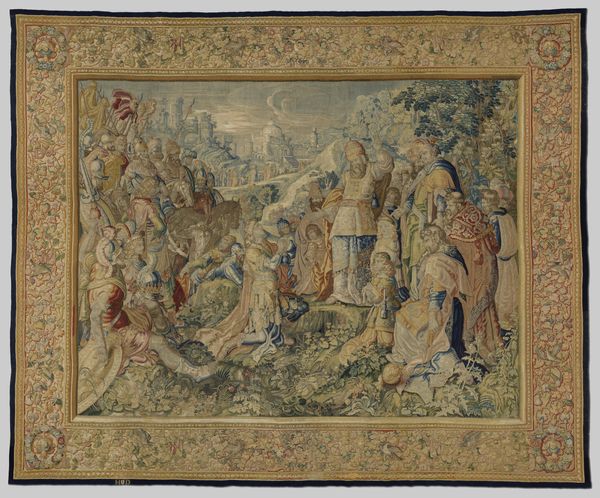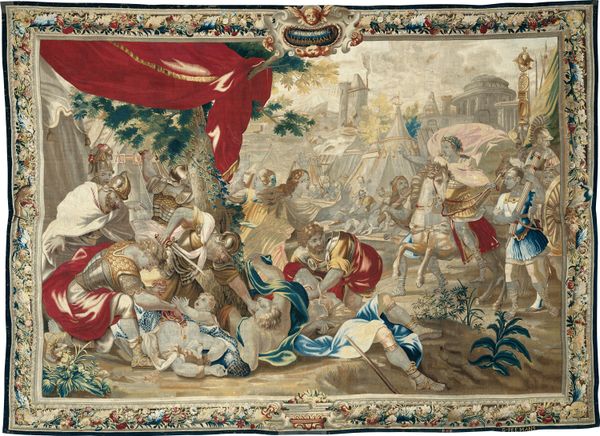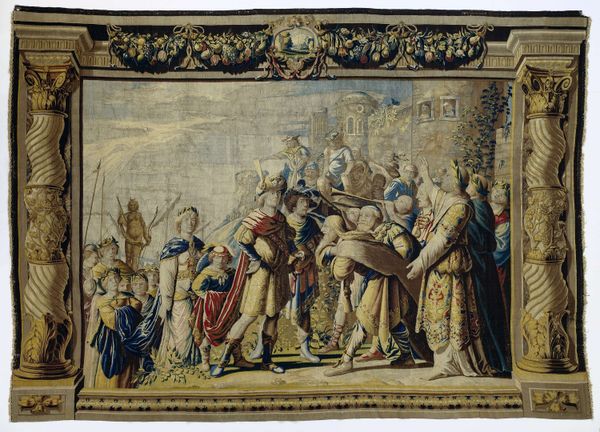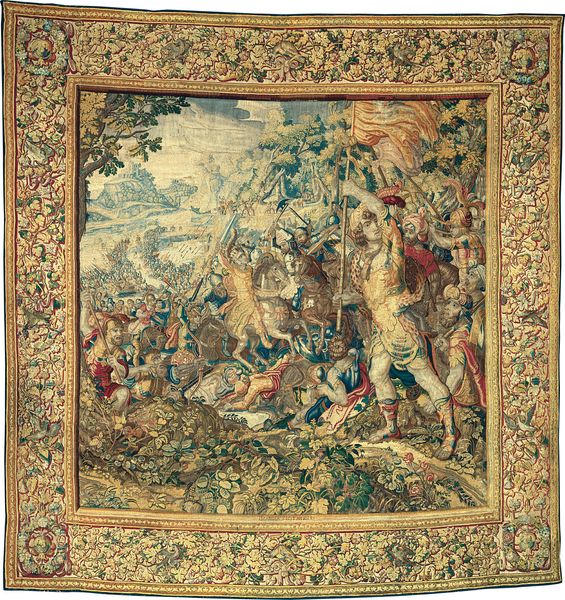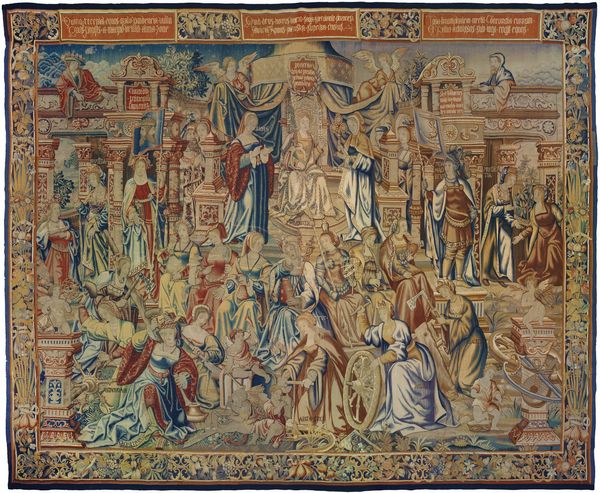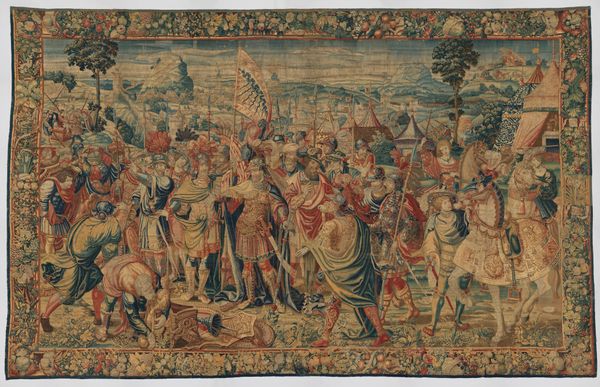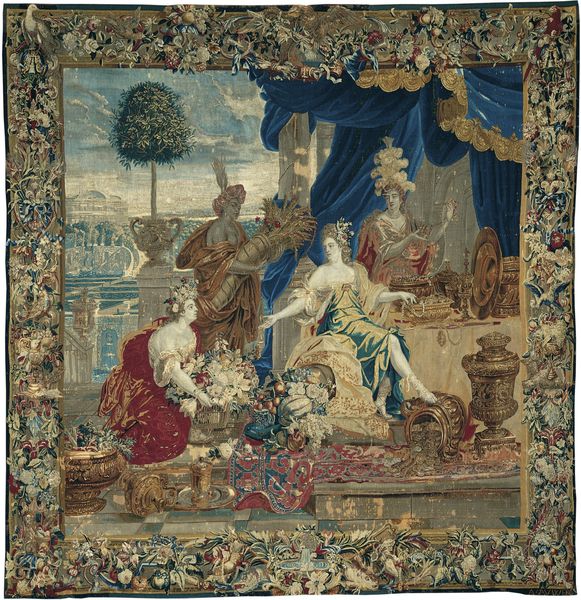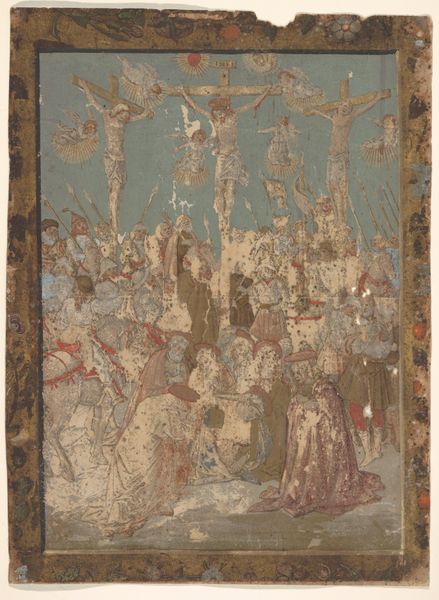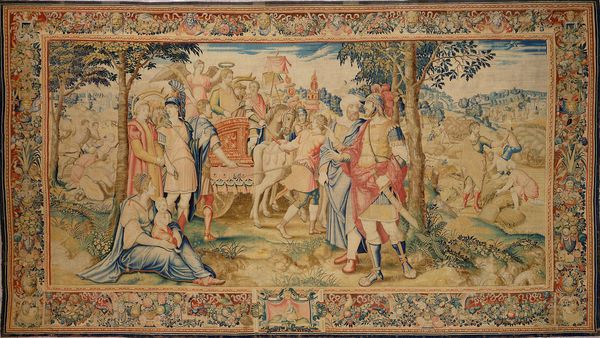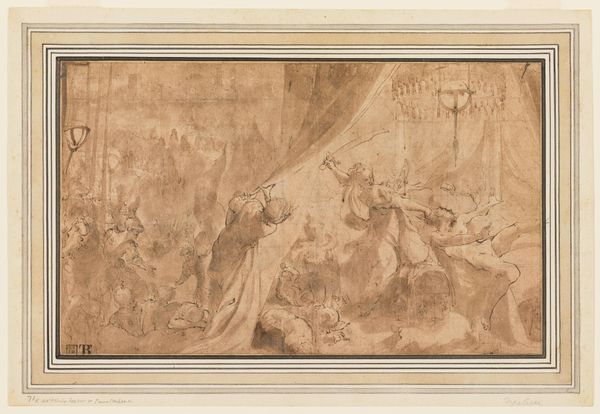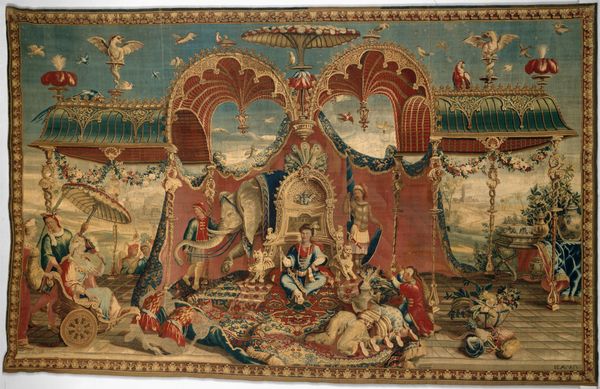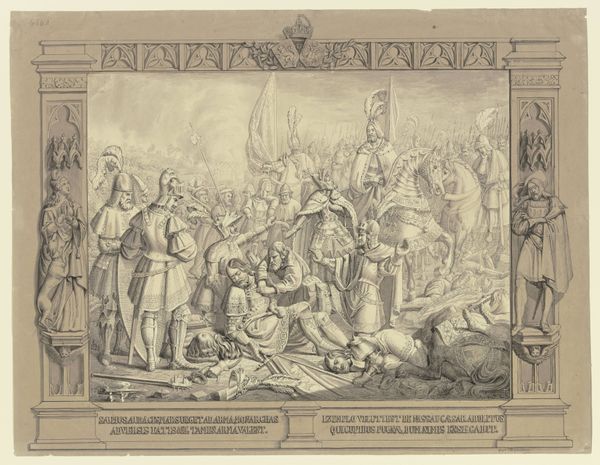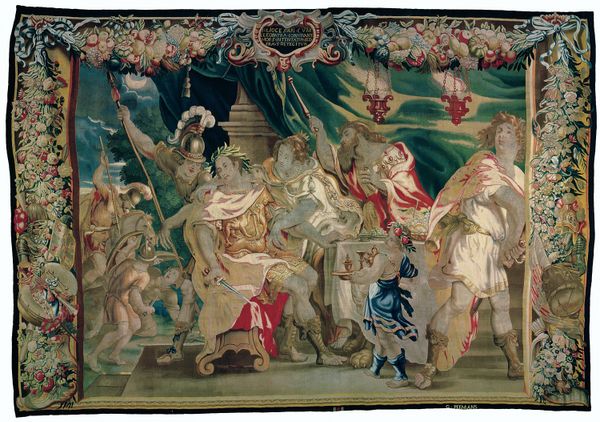
mixed-media
#
natural stone pattern
#
mixed-media
#
toned paper
#
medieval
#
figuration
#
11_renaissance
#
history-painting
#
mixed media
Dimensions: height 438 cm, width 513 cm
Copyright: Rijks Museum: Open Domain
Editor: Here we have Karel van Mander the Second’s “The Burning of Persepolis from the History of Alexander the Great” created in 1619 using mixed media. My initial impression is that it has an unsettling, almost chaotic energy, a stark contrast to the sort of grand, ordered history paintings I'm used to seeing. What do you see in this piece? Curator: Chaotic is definitely one word for it! Look at the smoke billowing in the background, mirroring the drama unfolding amongst the figures. Van Mander, he's not just recounting history; he's staging it like theatre. Notice the detailed border, almost fighting for attention with the central scene, filled with floral ornaments. Is it celebrating a victory, or lamenting destruction? Or both? Editor: That's interesting, because it doesn’t read as clearly celebratory to me, especially with the city ablaze. I guess that begs the question of intent then… did he intend a kind of moral commentary on Alexander’s actions, or was he just glorifying a conqueror? Curator: Perhaps both co-exist! The Renaissance loved its moralizing tales. The opulent details and skilled rendering definitely speak to glorification. But the destruction… Maybe it's a reminder: even the mightiest empires can fall. Think of it as a very lavish cautionary tale. And a brilliant mixed-media spectacle that merges many visual voices and moods in an allegorical way! What do you take away from all this? Editor: I now see that the piece isn’t so straightforward as an illustrative rendering, and the inherent duality makes it richer. It shows how you can glorify a historical narrative and present a reflective point through its materiality. Curator: Exactly! It seems to be quite true that time does, indeed, make ancient good uncouth. Now let’s move on to the next one.
Comments
No comments
Be the first to comment and join the conversation on the ultimate creative platform.
